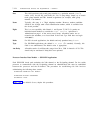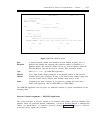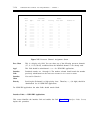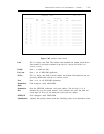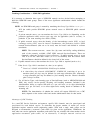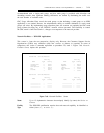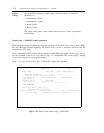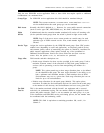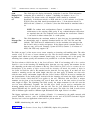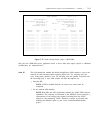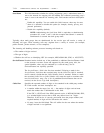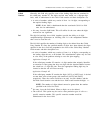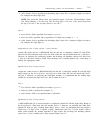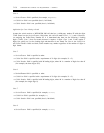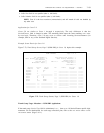
7-132
ADMINISTRATION OPTIONS AND REQUIREMENTS — GENERIC 1
Send
Display/TCM
in Codeset
6/7
Max
Message Size
to Send
This field maps the display information (codepoint 8) and the TCM information
(codepoint 40) to codeset 6 or codeset 7, depending on whether a 6 or a 7 is
translated. The distant switch will determine which should be translated.
Specifically, if the distant switch is a 4ESS with 4e11 or 4e12 software, or a System
85 R2V4, then this field should be translated with a 7. If the distant switch is a
4ESS with 4e13, Generic 1, or Generic 2, then the field should be translated with a
six.
NOTE: For tandem node configurations, Generic 1 rebuilds the message in
conformance to the outgoing trunk group. If any codeset/codepoint conversions
are required, then the two endpoints must coordinate the conversions. Generic
1 can receive in either codeset (this is a send option).
This field determines the maximum number of bytes that may be transmitted before
an acknowledge reply is required. Permitted entries are 128, 244, 256, and 260
(default). This field must be administered to be the maximum size messages that
the far end is able to receive and process. If the distant switch is another Generic 1,
then any entry will work. Currently, System 85 R2V4, Generic 2, all releases of
4ESS, and 5ESS only support 128.
The fields on page 2 of the
TRUNK GROUP screen comprise an incoming call handling table. The table
consists of up to 12 rows of seven columns per row. The first three columns constitute a key that
together select which row or unique treatment should apply for an incoming call on the group. The
remaining four columns specify the treatment to be provided for a call that matches the key.
The first column or field in the key is the Service/Feature field. If an incoming call is for a service
listed in a row in the incoming call handling table, then that row may specify the treatment for the
call, depending on the other two columns of the key. The Called Len field is used to continue the row
determination. If the number of digits received with the incoming call match the number of digits in
the Called Len field for calls to the matched service, then this row may apply. If no other row also
contains a matching service and called length, then this row does apply. If another row does exist
with the same service and number length, then the Called Number field will be used to continue the
row determination. If the leading digits received with the incoming call match the digits specified in
the Called Number field, then this row applies to the call. Therefore, with this table, a unique
treatment can be given to any incoming call, even if these calls are to the same service or have the
same length of digits. The remaining four fields specify the unique treatment for the call once the
row has been determined. Together, the Del and Insert fields can be used to manipulate the
incoming number that will be used to route the call. The Per Call SID/ANI field can be used to
request SID/ANI only for specific calls incoming on the group. The Night Serv field is used to have
calls of different types routed to different night destinations when night service is in effect.
The biggest application of this table is when a Generic 1 is connected to the public network with
several different services, such as MEGACOM
®
800 service and ACCUNET
®
Switched Digital
Services, but it also has applications when used in a private network.
NOTE: Administering this table is optional.
Figure 7-71, Trunk Features Screen, Page 2 (ISDN-PRI), depicts this procedure.



